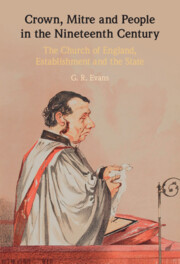426 results
The effect of older age on outcomes of rTMS treatment for treatment-resistant depression
-
- Journal:
- International Psychogeriatrics , First View
- Published online by Cambridge University Press:
- 25 March 2024, pp. 1-6
-
- Article
-
- You have access
- Open access
- HTML
- Export citation
Cenozoic evolution of the Tripolitza carbonate platform in the Tethyan realm: new age constraints on deposition, diagenesis, metamorphism and nappe emplacement based on U-Pb and Rb-Sr dating (External Hellenides, Crete)
-
- Journal:
- Geological Magazine / Volume 160 / Issue 7 / July 2023
- Published online by Cambridge University Press:
- 20 July 2023, pp. 1282-1300
-
- Article
- Export citation
Prediction of extubation failure in the paediatric cardiac ICU using machine learning and high-frequency physiologic data
-
- Journal:
- Cardiology in the Young / Volume 32 / Issue 10 / October 2022
- Published online by Cambridge University Press:
- 20 December 2021, pp. 1649-1656
-
- Article
- Export citation
Index
-
- Book:
- Crown, Mitre and People in the Nineteenth Century
- Published online:
- 14 September 2021
- Print publication:
- 23 September 2021, pp 317-336
-
- Chapter
- Export citation
Chapter 2 - What Happened in an Ecclesiastical Court?
-
- Book:
- Crown, Mitre and People in the Nineteenth Century
- Published online:
- 14 September 2021
- Print publication:
- 23 September 2021, pp 98-125
-
- Chapter
- Export citation
Conclusion
-
- Book:
- Crown, Mitre and People in the Nineteenth Century
- Published online:
- 14 September 2021
- Print publication:
- 23 September 2021, pp 292-307
-
- Chapter
- Export citation
Bibliography
-
- Book:
- Crown, Mitre and People in the Nineteenth Century
- Published online:
- 14 September 2021
- Print publication:
- 23 September 2021, pp 308-316
-
- Chapter
- Export citation
Introduction - A National Church in the National Life
-
- Book:
- Crown, Mitre and People in the Nineteenth Century
- Published online:
- 14 September 2021
- Print publication:
- 23 September 2021, pp 1-32
-
- Chapter
- Export citation
Chapter 5 - Not in the Church of England but …
-
- Book:
- Crown, Mitre and People in the Nineteenth Century
- Published online:
- 14 September 2021
- Print publication:
- 23 September 2021, pp 242-291
-
- Chapter
- Export citation
Chapter 3 - Taking the Clergy to Court
-
- Book:
- Crown, Mitre and People in the Nineteenth Century
- Published online:
- 14 September 2021
- Print publication:
- 23 September 2021, pp 126-201
-
- Chapter
- Export citation
Copyright page
-
- Book:
- Crown, Mitre and People in the Nineteenth Century
- Published online:
- 14 September 2021
- Print publication:
- 23 September 2021, pp iv-iv
-
- Chapter
- Export citation
Table of Cases
-
- Book:
- Crown, Mitre and People in the Nineteenth Century
- Published online:
- 14 September 2021
- Print publication:
- 23 September 2021, pp xv-xviii
-
- Chapter
- Export citation
Chapter 4 - Taking the Laity to Court
-
- Book:
- Crown, Mitre and People in the Nineteenth Century
- Published online:
- 14 September 2021
- Print publication:
- 23 September 2021, pp 202-241
-
- Chapter
- Export citation
Chapter 1 - The Disputed Boundary between Church and State
-
- Book:
- Crown, Mitre and People in the Nineteenth Century
- Published online:
- 14 September 2021
- Print publication:
- 23 September 2021, pp 33-97
-
- Chapter
- Export citation
Preface
-
- Book:
- Crown, Mitre and People in the Nineteenth Century
- Published online:
- 14 September 2021
- Print publication:
- 23 September 2021, pp vii-viii
-
- Chapter
- Export citation
Abbreviations
-
- Book:
- Crown, Mitre and People in the Nineteenth Century
- Published online:
- 14 September 2021
- Print publication:
- 23 September 2021, pp ix-xi
-
- Chapter
- Export citation
Contents
-
- Book:
- Crown, Mitre and People in the Nineteenth Century
- Published online:
- 14 September 2021
- Print publication:
- 23 September 2021, pp v-vi
-
- Chapter
- Export citation
Reviews
-
- Book:
- Crown, Mitre and People in the Nineteenth Century
- Published online:
- 14 September 2021
- Print publication:
- 23 September 2021, pp ii-ii
-
- Chapter
- Export citation
Legislation
-
- Book:
- Crown, Mitre and People in the Nineteenth Century
- Published online:
- 14 September 2021
- Print publication:
- 23 September 2021, pp xii-xiv
-
- Chapter
- Export citation

Crown, Mitre and People in the Nineteenth Century
- The Church of England, Establishment and the State
-
- Published online:
- 14 September 2021
- Print publication:
- 23 September 2021

